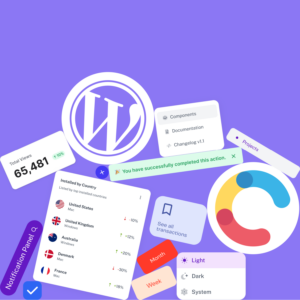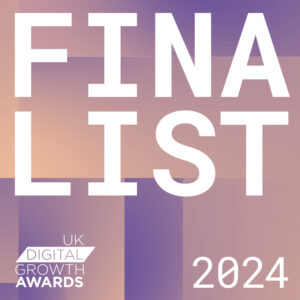For over two decades, Google has been the dominant force in search, shaping the way users access information online. But recent data and a declining share price indicates Google’s once-unquestioned supremacy is beginning to show cracks.
As of January 2025, Google’s market share had remained under 90% for four consecutive months, sitting at 89.78%. This decline marks a significant shift, as prior to October 2024, the last time Google’s market share dipped below 90% was in March 2015. Meanwhile Alphabet, Google’s parent company, has seen its stock price fall 20% (as of March 11, 2025) following a disappointing earnings report and volatility in the US stock market.
While Google remains the dominant player, growing competition from other search engines, AI-driven search alternatives, increased scrutiny over search result quality, and evolving user behaviour all raise serious questions about the company’s long-term future. SEOs, digital marketing professionals and businesses must take note of these shifts and prepare for a changing landscape.
Google’s Declining Market Share: Key Trends
Google’s market share had been above 90% since 2015, but the recent downturn suggests a gradual erosion of dominance. October 2024 marked the lowest point in over a decade (89.34%), highlighting a downward trajectory that coincides with competitors like Bing and Yandex making small but notable gains:
- In October 2024, Bing recorded its second-highest market share ever (4.16%), the highest since 2011.
- Yandex reached a record-high market share of 2.78% in the same month.
- This decline in Google’s market share does not account for AI-based search alternatives, meaning the real shift could be even more pronounced.
- Whilst Google is still dominant and search competitors still pale in comparison, the direction of the trend is noteworthy and something SEOs and businesses should closely monitor.
A recent study of UK and US users found 27% now prefer AI chatbots like ChatGPT over traditional search engines. AI-driven search alternatives are altering user behaviour by providing direct answers without the need for traditional search engine result pages as tools like ChatGPT and Perplexity AI, powered by Large Language Models (LLMs), deliver instant, research-driven responses, reducing reliance on Google for informational queries.
This shift to LLMs and AI platforms is underlined by data showing:
- 57% of respondents use AI daily.
- 49% see AI and traditional search engines as interchangeable.
- 67% believe AI will replace traditional search within three years.
In response, Google has started integrating AI into its search experience via the Google Search Generative Experience (SGE), or AI Overviews.
However, reaction to Google’s jump into AI has been mixed, with concerns over bias, accuracy, and its role in increasing zero-click searches, leading to outcry from the SEO world and from companies harmed. Education platform Chegg is suing Google regarding Google’s AI Overviews, alleging AI-generated content is infringing on their educational material. There are numerous examples of AI Overviews providing users with incorrect information, including suggesting users can eat rocks, stick cheese to pizza with glue, and misattributing awards to different musicians, including claiming US indie musician MJ Lenderman has won 14 Grammys, when the true number is zero, which corresponds with a recent Vox Media survey found that 42% of respondents believe Google Search is becoming less useful. While Google’s lead remains substantial, the shift suggests that users are actively exploring alternatives—not just AI tools, but competing search engines as well.
Anecdotal evidence from popular forums like Reddit suggests growing dissatisfaction with Google’s search results. Users have expressed frustration over declining result quality, increased ad placements, and ineffective AI-generated search responses:
- “Does Google realize they already had a really good search engine? The AI doesn’t work. It sucks.” (5.6k upvotes)
- “It’s shaping up to fit in with the shockingly poor Google Search results that are loaded with sponsored garbage.” (2.3k upvotes)
- “Even when you get to the first results, they are usually useless articles, AI-generated content, or sales pitches.” (2.3k upvotes)
But for now, this criticism is not slowing Google down. Recent data claims AI Overviews now appear in 42% of Google search results, and last week Google announced AI Mode, search results pages which now only exclusively show AI-generated results.
The Search Landscape has vastly changed in a short amount of time, with SEO professionals and businesses reliant on Search left no choice but to adapt to these changes. From our recap of BrightonSEO back in October 2024, we reported that when an AI Overview appears in a Google search, organic click-through rates (CTR) drop by 70%. By January 2025, a new study has revealed this estimated CTR decline to have reached 84%.
SEO isn’t dead or dying, but is evolving at a faster pace than we’ve become accustomed to. Declining CTRs due to more AI Overviews means data optimisation is more important than ever, as is having the knowledge and resources to capitalise when opportunities arise.
This evolving search landscape presents both challenges and opportunities for SEO and digital marketing. With AI reshaping user behaviour, businesses must consider multi-platform strategies and optimise for AI-driven search as well as traditional search engines. SEO remains essential, but the rise of AI-driven platforms underscores the importance of conversion optimisation and data analysis. Businesses need to make the most of their traffic, and the utilisation of tools like Google Analytics 4 (GA4) and Looker Studio for tracking user behaviour and refining marketing strategies has never been more important.
Google’s Stock Price Downturn After February’s Earnings
At the time of writing, Google’s parent company Alphabet has seen its stock fall by 20% since its most recent earnings report. Revenue growth in key sectors, including cloud computing, fell short of expectations which fuelled investor concerns as Wall Street firms cut Alphabet’s price target, citing increased competition and AI disruption. This includes Morgan Stanley, J.P. Morgan, Morgan Stanley and Citi. Analysts have explained this is due to tougher year-on-year comparisons in search revenue and anticipated increases in expenditures, such as higher spend on AI to adapt to the changing market.
Google remains the dominant player in search, but its supremacy is being tested as alternative search engines, privacy-focused platforms, and AI tools gain traction. The company is heavily investing in AI and cloud services to counteract market shifts, including plans to increase capital expenditures with $75 billion earmarked for AI development and expansion. Google has also invested $3 billion into Anthrophic, and have been boosted by the Department of Justice recently deciding not to proceed with a plan that would’ve required Alphabet to sell its stakes in AI firms.
Google is heavily investing in AI and cloud computing to maintain its competitive edge, but its cloud division’s underperformance and search revenue expectations raise questions for Wall Street, investors, SEOs and businesses about its long-term dominance. SEOs and businesses must prepare for a future where Google is no longer the sole gateway to online visibility.
Of course, there’s wider geo-political uncertainty and volatility in the stock markets stemming from the policies of the Trump administration. But this sort of stock downturn and decline in market share isn’t a surprise to many within the SEO community. SEOs and businesses crave consistency and stability, and the flurry of sweeping changes from Google over the past two years has provided anything but.
So what does the future hold?
Google’s declining market share reflects a broader shift in how users seek information. While AI-powered search tools and alternative search engines continue to grow, SEO remains crucial. The past year has seen the term Generative Engine Optimisation (GEO) coined, focusing on optimising content for discoverability by LLMs. For marketers and businesses, this marks a wider shift, from not just ranking well in search results, but adapting to the evolution of user behaviour as LLMs continue to gain precedence.
Companies must adapt by:
- Tracking and analysing search trends across platforms.
- Optimising for both traditional search and AI-driven search tools.
- Enhancing conversion funnels to capitalise on the traffic they do receive.
The search landscape is changing, and businesses that evolve alongside it will be best positioned for success. At SoBold, we can help you navigate these shifts and develop a strategy that keeps you ahead in an AI-driven digital world.






